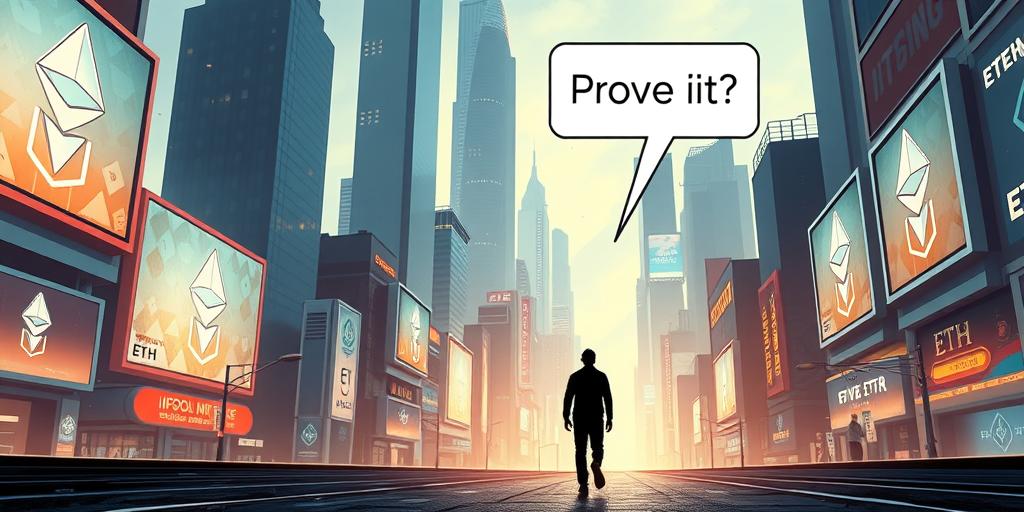Okay, okay, I get it. You’re looking at Ethereum (Ethereum cryptocurrency, Ethereum technology, Ethereum ecosystem), and it’s all a little… confusing. All these fancy words about decentralized applications (dapps), smart contracts, and gas fees (Ethereum gas fees), and you’re just sitting there wondering, “Is this even real?” Trust me, I’ve been there. I’ve seen the memes, I’ve heard the groans about gas fees, and I almost gave up before I even started. But then something happened…
Ethereum: More Than Just a Meme (or a Meme-Coin)
Let’s be honest, Ethereum isn’t just some quirky meme circulating the internet. Sure, there are those hilarious pictures of a confused ETH cat or the one about Ethereum becoming a dog with a collar saying “Gas Fee” – those are funny, but don’t let those distract you from what’s really happening. Ethereum is, for lack of a better word, a revolution (blockchain revolution, blockchain technology).
Think of it like this: the internet revolutionized how we access information, how we connect with others, how we even do our jobs. Ethereum is trying to do the same for financial services, e-commerce, digital art, and, well, basically anything you can imagine. You can think of it like the Wild West of technology – things are still figuring themselves out, but the potential is huge.
The Big Idea: Putting the Power Back Where It Belongs
Imagine a world where you could trade stocks directly, send money internationally without the middlemen taking a cut, or own your digital artwork without having to worry about it getting stolen. That’s the beauty of Ethereum! It uses the blockchain technology (blockchain basics) to create a decentralized, secure (Ethereum security, cryptocurrency security), and transparent system. You know those pesky banks and companies controlling your finances? Not anymore. With Ethereum, your transactions happen directly between you and the other person – no big, powerful institution holding all the cards.
But wait, there’s more!
Smart Contracts: The Secret Sauce of Ethereum
This is where things get really interesting. Smart contracts are little pieces of code that run on the Ethereum network (Ethereum network functionality) to automatically execute agreements between two or more parties. Think of it as a self-enforcing contract that lives on the blockchain.
So, how can this be used in the real world? Think about buying insurance: with Ethereum, you can program your smart contract to automatically release payment if you get in a car accident. Or, consider a rental agreement: imagine signing a lease that enforces the payment terms automatically, eliminating the risk of late fees and tenant headaches. Smart contracts literally “code the future,” changing the way we do business forever.
But… What About the Gas Fees?
We can’t talk about Ethereum without addressing the elephant in the room – gas fees (gas fees explanation). While a huge selling point of Ethereum is its transparency and lack of a central authority, this does come with a caveat: someone needs to run the network and process all those transactions, right? This requires computational power, and that’s where the gas fee comes in. Basically, you’re paying a small fee to cover the costs of making the transaction happen. It’s like paying a tip at a restaurant, except it’s going to help power the Ethereum network.
It’s true that gas fees can sometimes feel like a drag – especially when it’s time to sell that NFT (NFTs, non-fungible tokens) you bought on a whim. The good news? There’s been significant development in addressing these issues – from Ethereum scaling solutions (Ethereum scaling, Layer-2 scaling) that aim to speed up the network and reduce gas fees to alternative cryptocurrencies (cryptocurrency comparisons, altcoins) with different fee structures.
Is Ethereum the Future of Finance?
We’ve come a long way from the early days of Bitcoin. While crypto is still new, it’s been gaining traction in a big way. As for Ethereum, it’s rapidly evolving. More and more developers are building on its platform, creating everything from new games to DeFi protocols (decentralized finance protocols) to cutting-edge solutions for various industries. While the journey may be bumpy with its challenges like gas fees, Ethereum is demonstrating its true potential.
The Ethereum landscape is continuously changing, and there are constantly new innovations to watch out for. The future of finance, or perhaps even the future of the internet as a whole, could be more decentralized, transparent, and user-friendly than we could ever have imagined. So, ditch the preconceived notions, embrace the revolution, and see for yourself. It might be more than a meme, you know?
Key Takeaways
- Ethereum is a decentralized network that’s aiming to revolutionize finance and the world of digital transactions.
- Smart contracts enable self-enforcing agreements on the Ethereum blockchain, changing the way we do business and eliminating the need for third-party involvement.
- Gas fees, while an issue, are continuously being addressed, with innovative solutions being developed to improve speed and affordability.
- Ethereum is in constant development and evolving to overcome its challenges and become the most secure and efficient network possible.
Still have questions? Jump in! We’d love to discuss Ethereum, blockchain technology, and the endless possibilities it brings. Let’s revolutionize the future together, one smart contract at a time!






